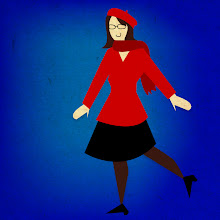Some icons are obvious, others less so (the website Icons, a portrait of England, is a great resource on the subject). But when in doubt of an icon status, there is usually an incontestable argument: whether or not the object of the debate has been plagiarized, used as a reference or made fun of.
The “Keep Calm And Carry On” poster was created during the Second World War by an unknown British designer and never actually published. However, it was rediscovered, and during the second half of the 20th century was plastered all over merchandizing, mugs and sheets, and became one of those icons I was talking about.
One could wonder about the reason of this craze around what is in all objectivity a fairly basic poster (even if undeniably visually very strong). For myself, I think this poster has two major strengths as well as a third lesser one:
- The color. Whether it be roses, double Deckers, phones booths or the pillar boxes of the Royal Mail, red is the emblematic colour of England, no arguing about that.
- The text. “Keep Calm And Carry On” is not only a very powerful line, it’s also the embodiment of the British spirit. It’s all about the infamous composure of the British gentleman, but also a tribute to the determination and calm resiliency of a whole people.
- The Crown. No United Kingdom without the Royal Family. The poster wouldn’t work half as well without this discrete warrant of royalty.
And as I said before, all those elements that make this poster great have been used, referenced and played with in every way possible.
Once at a poetry reading I saw a book cover referencing it. I myself has used it for the introduction part of a presentation during a debate on which outdoor advertising was the best: the French’s or the British’s?
I was obviously on the British side.
I also came across those mugs at Selfridges. They played with the three elements I was talking about, and yet the reference is still very obvious. :)
Those are just a few example of the ways an icon can be used to convey a new message, using what the viewer know about it and taping in all the subconscious associations in order to deliver a strong idea.

No comments:
Post a Comment